Website and Marketing Terms You Should Know Before Building a Website
Website and Marketing Terminology
Value Proposition or value statement: This is a promise of value to be delivered and acknowledged. It’s also a belief from the customer how value (benefit) will be delivered and experienced. In a nutshell, the value proposition is a clear statement that
- explains how your product solves customers’ problems or improves their situation (relevancy),
- delivers specific benefits (quantified value),
- tells the ideal customer why they should buy from you and not from the competition (unique differentiation).
Copy: Copy, which is the written content. Web copy is the bones of your website. It’s the core text that guides people through your site and tells them what they need to know.
Marketing Funnel: is a consumer-focused marketing model which illustrates the theoretical customer journey towards the purchase of a product or service.
This staged process is summarized below:
- Awareness or Exposure – the customer becomes aware of the existence of a product or service
- Discovery – 1st few visits
- Consideration– thinking about being a customer
- Conversion/ Action – Completion of an action on the website
Conversion Funnel: Similar to a purchase or marketing funnel, ‘conversion funnel’ is a technical term used in e-commerce operations to describe the track a consumer takes through an Internet advertising or search system, navigating an e-commerce website, and finally converting to a sale.
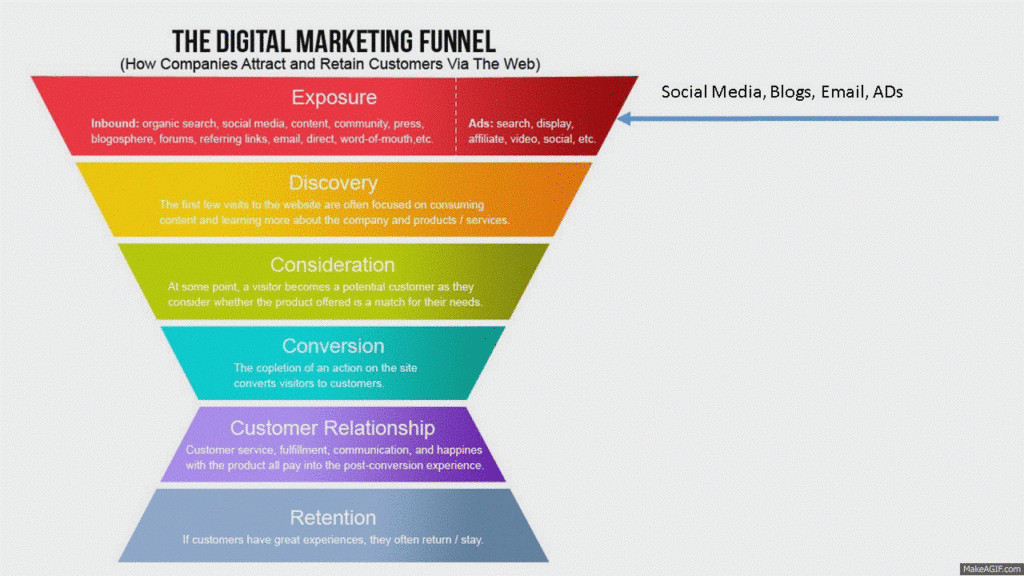
Customer or Buyer Journey: A customer journey map is a framework that enables you to improve your customer experience. It documents the customer experience through their perspective, helping you best understand how customers are interacting with you now and helps you identify areas for improvement moving forward. Great customer journey maps are rooted in data-driven research, and visually represent the different phases your customers experience based on a variety of dimensions such as sentiment, goals, touchpoints, and more.
Example of a E-commerce Buyers Journey
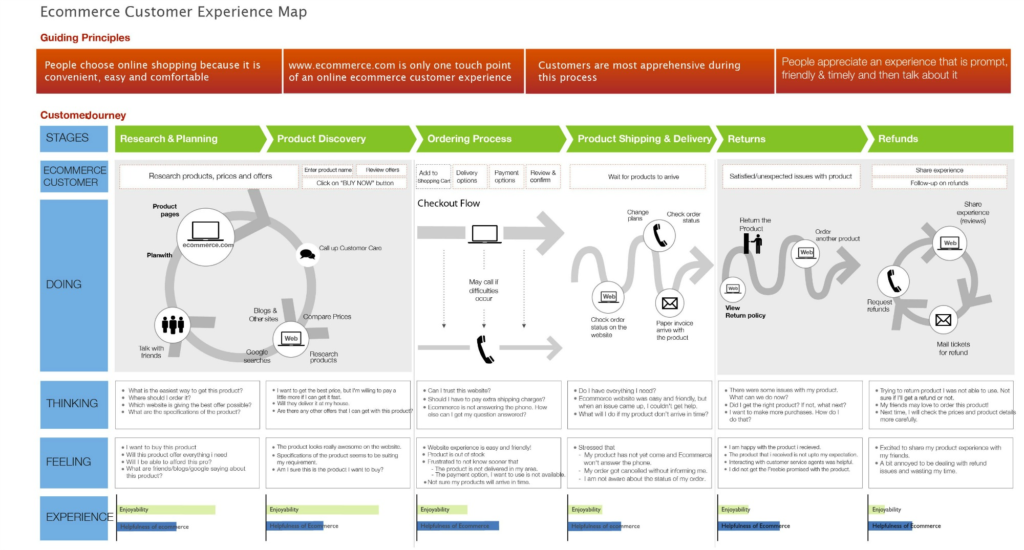
Remarketing: Remarketing is any sales and advertising strategy that maintains contact with potential customers after they visit a business. Remarketing consists of any marketing materials that remind people of businesses they have visited in the past, increasing the likelihood that those people will make repeat purchases. (ex. Ad on Facebook for an item that you abandoned in your shopping cart)
Call to Action: In marketing, a call to action (CTA) is an instruction to the audience to provoke an immediate response, usually using an imperative verb such as “call now”, “find out more” or “visit a store today”. In web design, a CTA is a banner, button, or some type of graphic or text on a website meant to prompt a user to click it and continue down a conversion funnel.
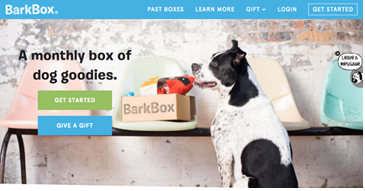
Social Proof: Social proof is a psychological phenomenon where people reference the behavior of others to guide their own behavior. This tendency is driven by our natural desire to behave “correctly” under most circumstances—whether making a purchase, deciding where to dine, determining where we should go, what we say, who we say it to, and so on. Reviews, testimonials, see on… are examples of social proof.

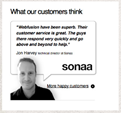
Above the Fold: Used in web development to refer to the portions of a webpage that are visible without scrolling.
Responsive Website: This is an approach to web design aimed at crafting sites to provide an optimal viewing and interaction experience—easy reading and navigation with a minimum of resizing, panning, and scrolling—across a wide range of devices (from desktop computer monitors to mobile phones)
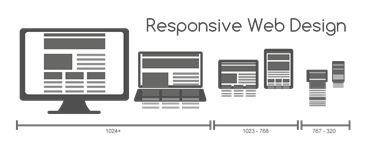
Image File Types: Image file formats are standardized means of organizing and storing digital images.
JPEG: (Joint Photographic Experts Group) is a lossy compression method. Nearly every digital camera can save images in the JPEG format, which supports eight-bit grayscale images and 24-bit color images (eight bits each for red, green, and blue)
PNG: (Portable Network Graphics) file format was created as a free, open-source alternative to GIF. The PNG file format supports eight-bit paletted images (with optional transparency for all palette colors) and 24-bit true-color (16 million colors) or 48-bit true-color with and without alpha.
GIF: (Graphics Interchange Format) is in normal use limited to an 8-bit palette, or 256 colors (while 24-bit color depth is technically possible). GIF is most suitable for storing graphics with few colors, such as simple diagrams, shapes, logos, and cartoon style images.
Compressing Images: Make the file size smaller. The best image quality at a given bit rate (or compression rate) is the main goal of image compression.
Hosting: A web hosting service is a type of Internet hosting service that allows individuals and organizations to make their websites accessible via the World Wide Web.
Front End Development: also known as client-side development is the practice of producing HTML, CSS, and JavaScript for a website or web application so that a user can see and interact with them directly.
Back End Development: Back-end developers primarily develop and maintain the core functional logic and operations of a software or information system.
SEO (Search Engine Optimization) SEO makes your website easy for both users and search engine robots to understand. Although search engines have become increasingly sophisticated, they still can’t see and understand a web page the same way a human can. SEO helps the engines figure out what each page is about, and how it may be useful for users